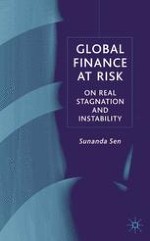2003 | Buch
Über dieses Buch
Sunanda Sen offers an analysis of the ongoing malaise in the world economy, which include the financial and real instability as well as economic recession and lack of development. Rejecting the explanations advanced by the orthodoxy, she deplores the retrograde steps in the interest of high finance. This calls for a change in policies, away from the contractionary monetarist devices and in the direction of demand expansion which will prove mutually beneficial for both advanced and developing countries.
Anzeige
